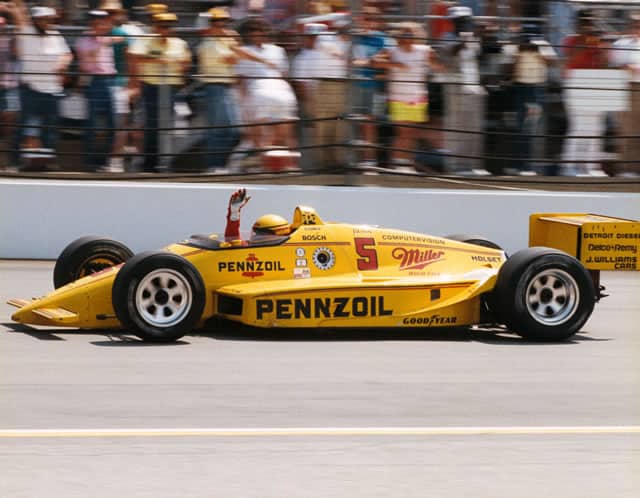Penske Racing rolled into the 1988 Indianapolis 500 looking for redemption.
Much like the current group that took the front row last Sunday (May 19), the three Penske drivers who swept the first three spots in qualifying had a lot to prove.
Instead of overcoming the residual penalties and emotions in the paddock from a scandal, Roger Penske’s team at the 72nd Running of the Indianapolis 500 was hoping to return to glory and move past the frustration of a poorly-performing chassis the year before.
During the 1987 Indy Car season, a newly designed Penske PC-16 performed terribly for the championship operation. By the Indianapolis 500, drivers Rick Mears and Danny Sullivan dropped the use of the meandering car in favor of their back-ups, which were the reliable albeit ageing March chassis. After Mario Andretti who dominated in a Lola fell out, it was newly added Penske driver Al Unser, in a March who took victory.
Unbeknownst to the paddock, the engineering team over the offseason immediately went to work improving the design that failed in 1987. The personnel decision to let go designer Alan Jones and replace him with Nigel Bennett proved to be a long-lasting positive move for all future Penske chassis.
When practice opened for 1988’s Month of May track activities, Mears showed that the new Penske PC-17 was fast. He posted quick times, including an unofficial track record, in the week leading up to the first weekend of qualifications and was a favorite to earn his record fourth pole.
Even with Penske’s speed, there were other drivers fully capable of challenging for win. First in line was Mario Andretti, who had his best shot to win his second Indy 500 the year before. His Newman-Haas team had a monopoly on the Lola they used as co-owner Carl Haas was the lead American distributor for those vehicles. Former Formula 1 champion Emerson Fittipaldi was coming off a stellar 1987 campaign winning two times with the highly competitive Patrick Racing operation. The team had won the 500 in 1973 and 1982 with Gordon Johncock and hoped the F1 champ would take to ovals quickly…
Click Here to Read the Full Original Article at …

